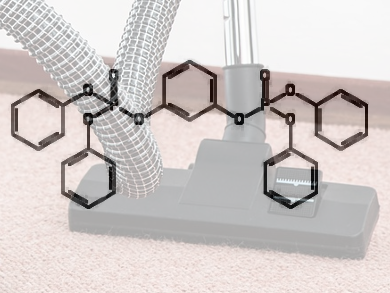Organophosphorus flame retardants have recently been detected in household dust, raising concerns over their health effects. The flame retardant resorcinol bis(diphenylphosphate) (RDP; pictured) has a high aquatic toxicity, partly because of impurities, including triphenyl phosphate (TPHP) and hydroxyl derivatives, that can be less persistent but more toxic than RDP.
Ana Ballesteros-GoÌmez, Vrije Universiteit Amsterdam, The Netherlands, and colleagues used wide-scope solvent extraction and high resolution time-of-flight mass spectrometry to test 25 polymer samples from electronic equipment and indoor dust from nearby surfaces for RDP and related compounds. Polymers incorporating RDP had the expected levels of TPHP, but other polymers had even higher levels, possibly because of cross-contamination during processing or because TPHP is present in other formulations as well. Only dust samples containing RDP also had meta-hydroxy-TPHP, a minor formulation impurity. The concentrations of both compounds were strongly correlated, but concentrations of meta-hydroxy-TPHP were higher than expected, possibly because of its greater ability to migrate into dust, or because it could be a hydrolysis product of of RDP.
More data on the presence and potential toxicity of meta-hydroxy-TPHP is necessary in future monitoring studies to assess the human exposure and risks to this compound.
- Impurities of Resorcinol Bis(diphenyl phosphate) in Plastics and Dust Collected on Electric/Electronic Material,
Ana Ballesteros-Gómez, Álvaro Aragón, Nele Van den Eede, Jacob de Boer, Adrian Covaci,
Environ. Sci. Technol. 2016.
DOI: 10.1021/acs.est.5b05351



